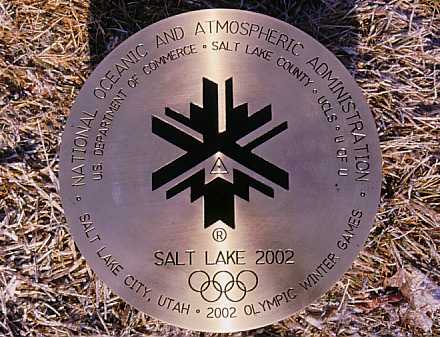 Lewis and Clark Corps of Discovery Bicentennial
Lewis and Clark Corps of Discovery Bicentennial 2002 Winter Olympics – Salt Lake City
2002 Winter Olympics – Salt Lake City U.S. Center of Population: 2000
U.S. Center of Population: 2000 NOAA Heritage Trail: The Calais Observatory
NOAA Heritage Trail: The Calais Observatory Ocean in View! The Nation's Newest Nickel
Ocean in View! The Nation's Newest Nickel 100th Anniversary of the First Flight
100th Anniversary of the First Flight 50th Anniversary of the Fredericksburg Geomagnetic Center
50th Anniversary of the Fredericksburg Geomagnetic Center Fagatele Bay National Marine Sanctuary, American Samoa
Fagatele Bay National Marine Sanctuary, American Samoa Pago Pago Harbor, American Samoa
Pago Pago Harbor, American Samoa Kilauea Point National Wildlife Refuge, Hawaii
Kilauea Point National Wildlife Refuge, Hawaii Hassler Park
Hassler Park 100th Anniversary of the U.S. Forest Service
100th Anniversary of the U.S. Forest Service National Estuarine Research Reserve System
National Estuarine Research Reserve System Hawaiian Islands Humpback Whale National Marine Sanctuary
Hawaiian Islands Humpback Whale National Marine Sanctuary
2002 Winter Olympics - Salt Lake City
In recognition of the 2002 Winter Olympic Games in Salt Lake City, NOAA's National Geodetic Survey established a commemorative, high-accuracy geodetic reference disk on the campus of the University of Utah.


The official logo of the XIX Olympic Winter Games represents a snow crystal with the Olympic rings and "SALT LAKE 2002" below. The colors yellow, orange, and blue represent the Utah landscape. Image courtesy of the International Olympic Committee/Olympic Museum collections.

Salt Lake City Surveyor Lynn Curt puts the final touches on the Salt Lake City Olympics commemorative mark setting.
This commemorative disk was set on February 5, 2002, in recognition of the 2002 Winter Olympic Games in Salt Lake City, Utah. Monumented with a beautiful, custom-made, 10-inch-diameter brass disk, station SALT LAKE 2002 is located just a short distance from the University of Utah's Rice-Eccles Stadium, the site of the Games' opening and closing ceremonies. The mark's design is based on the official logo of the 2002 Winter Olympics, which features a stylized snowflake.
As well as commemorating the 2002 Winter Olympics, SALT LAKE 2002 is designed to showcase the important roles that geodesy, surveying, and mapping technologies play in our everyday lives. This effort was undertaken cooperatively with the Utah Council of Land Surveyors, the City of Salt Lake, Salt Lake County, and the University of Utah.
Historic Reference
President George W. Bush officially opened the 2002 Olympic Winter Games in Salt Lake City on February 8. The closing ceremonies took place on February 24. These were the first winter games held in the United States since 1980, when they took place in Lake Placid, New York. For the 2002 games, Olympic venues were scattered around Salt Lake City, as well as in the mountains at Park City, Ogden, Provo, Kearns, and West Valley City. Athletes were housed in the Olympic Village at the University of Utah.
The Salt Lake City Olympic Winter Games saw the expansion of the Olympic program to 78 events, including the return of skeleton and the introduction of women's bobsleigh. 2,399 athletes (886 women and 1,513 men) from 77 nations competed in seven sports: biathlon, bobsleigh, curling, ice hockey, luge, skating, and skiing.
Athletes from a record 18 nations earned gold medals in the 2002 Winter Games. Canadian teams won both the men's and women's ice hockey tournaments. The United States was third in the medal count, behind Norway and Germany. U.S. athletes took home 10 gold, 13 silver, and 11 bronze medals. Competing in the women's bobsleigh, Vonetta Flowers became the first black athlete to earn winter gold, while ice hockey player Jarome Iginla followed as the first black male gold medal winner.
- Designation: SALT LAKE 2002
- PID: Not yet in database
- Year: 2002
- Location: Near the University of Utah's Rice-Eccles Stadium, Salt Lake City, Utah
- Latitude/Longitude: Not yet in database
- Event Commemorated 2002 Winter Olympics
